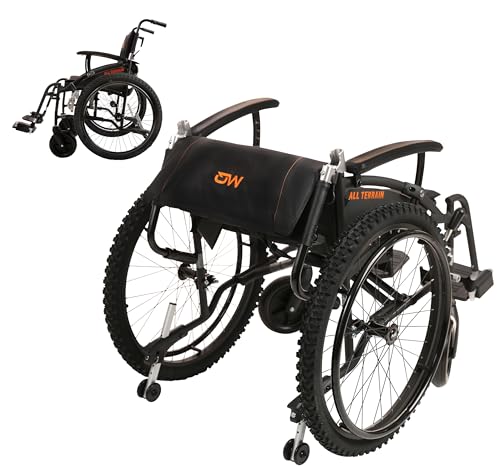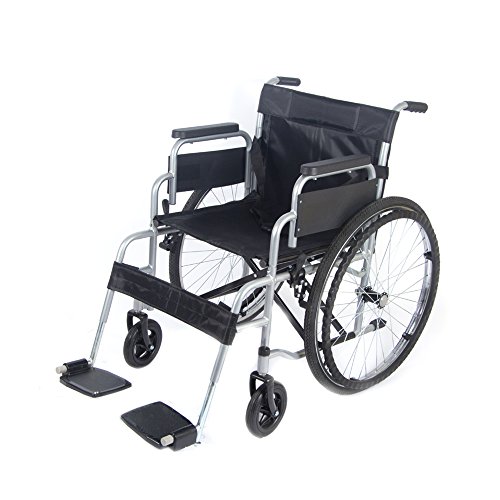5 Killer Quora Answers On How To Self Propel A Wheelchair
작성일 24-11-09 07:21
페이지 정보
작성자… 조회 3회 댓글 0건본문
 How to Self Propeller a Wheelchair
How to Self Propeller a WheelchairSelf-propelling wheelchairs can provide a whole new world of independence. It takes a lot of practice and a proper body posture to achieve this.
 Proper body positioning involves an exact grip and pushing technique. This article will focus on these skills, as well as other crucial aspects of wheelchair propulsion.
Proper body positioning involves an exact grip and pushing technique. This article will focus on these skills, as well as other crucial aspects of wheelchair propulsion.Hand Positioning
Properly pushing a wheelchair using hands is an important element of self propelling. It is recommended to begin with precision and then move to speed. It's also an excellent idea to squat while pushing to increase the stability and comfort, especially for users with upper body restrictions. The hands should be positioned to correspond with the speed of the wheel and to push evenly with both of them, without wrapping the thumbs around the hand-rims. This is a common mistake which reduces effectiveness and increases the amount of force required for each stroke.
To avoid contact with the rear wheel, the path to recovery for the hands should be in an "equilateral" pendular pattern beneath the hand-rims. This reduces the strain on the shoulders, as well as limiting the amount of strokes and length of each stroke at an absolute minimum.
For more difficult surfaces, it is sometimes recommended that wheelchair users utilize long strokes that allow for a full recovery (like the hand position on the clock). This can help to lessen shoulder injuries caused by repetitive motion, however it may also increase the burden on the shoulders.
It is also possible to minimize shoulder injuries by utilizing the same position while driving and braking. If the person using the wheelchair is able to keep a steady rhythm during both movements it will be simpler to manage the forces that are applied and to adjust for differences in the terrain.
On muddy or soft surfaces it is common to lean slightly forward when driving, to prevent the front wheels from sinking into the ground and tumbling backwards. It is worthwhile to test different levels of trunk lean in order to find the right balance between not enough and too much. Regular practice will boost your confidence and ability. Wheelchair propulsion is an essential ability for those who have mobility issues and can open up a whole world of freedom. With the right approach and the right equipment as well as a bit of education, anyone can learn to operate their manual wheelchair easily! This entry was filed under News and was tagged with wheelchair.
Foot Positioning
The position of the feet of the client is very crucial for stability. It's not always the best choice when the wheelchair has feet that are not close enough because this makes it difficult to self propel. Sometimes, it is necessary for the wheelchair to have this type of configuration to maneuver over difficult terrain. For instance, if the client is descending an extremely steep ramp or even across some of our fantastic National Parks or beaches, then the wheelchair will need to have wheels that can push up and over them in a way that allows the person to move forward. This is done by placing the front wheels as shown in the image below.
If the client has this setup they can grab the wheels' rims and push them in a direction to advance. This is a very slow and difficult method that requires a lot of upper body strength.
It is also crucial for the customer to be able to do wheelies, so that they can go over obstacles like curbs or other people. In this situation, the client will place their left foot on top of the right foot, to allow them to lift themselves up and over the obstacle. The client will then move their right leg upwards and over the obstacle, while pushing with their left hand. This is referred to as a"crown walk" and it is an effective way to maneuver a wheelchair through some of our most challenging terrain.
They're a great choice for disabled or injured people who wish to move about without needing help. They are lightweight self propelled wheelchair, compact and foldable, so they take up less space than other mobility aids. With the help of accessories such as the E-Motion, they are able to be transformed into powerchairs, giving the user the freedom to sit in their chair and the benefit of electrical assistance when needed.
Braking
self propelled wheelchair with suspension-propulsion in wheelchairs is an important skill for people with mobility issues. It lets them navigate many kinds of terrains and situations independently. It also helps to build strength in their shoulders and upper arms.
To propel a wheelchair forward, the user must apply pressure to the rim of one hand while pulling up on the opposite side. This push-pull motion generates momentum and pushes the wheelchair in the direction desired. You can adjust the speed of the wheelchair by applying more or less pressure to the wheels or by using the hand brakes when they're equipped.
The ideal push cycle should last at minimum three hours. This decreases the amount of time the shoulder is strained which reduces the chance of injury from repetitive strain. The size and width of the back wheels can affect the speed at which a wheelchair gets propelled. Larger wheels require more force to move, while smaller wheels are easier to maneuver. Wheelchairs may also be designed to have camber, which aligns the rear wheels with biomechanics and maximizes the stability in the lateral direction.
Wheelchair users looking to improve their technique for propelling should focus on achieving the correct body posture and practice in a safe environment, such as an empty parking lot or hall. The goal should be to create long, slow strokes, allowing the wheelchair to glide between strokes.
It is also important that the user practice maneuvering while moving, such as turning or weaving around objects. One method to do this is to weave through cones, and then gradually transitioning into straight-line movement. The more you practice, the easier it will become.
self propelled wheel chair-propelled wheelchairs are a fantastic device that allows people to remain active and enjoy the things they used to. They provide independence and can be a great way to meet with friends and go to the movies, or even travel. When you learn how to self propel a wheelchair the proper use of a wheelchair you will be able to continue or get back your independence and get the place you want to be.
Stability
Self-propelling wheelchairs allow wheelchair users to be independent, and go where they want without the need to rely on others. It does require the use of a lot of upper body strength, however, to push the wheels on flat surfaces, or even up small hills. This is why a lot of wheelchair users opt to use an attendant controlled (also called an attendant propelled) chair like the Action3 NG or ErgoLite 2 and are pushed by an attendant.
It is important to learn how to use a self propelled wheelchair to grip the rims of your hands on manual wheelchairs correctly to maximize functionality and comfort. We often see that customers who use this kind of chair tend to have the hand rims too far forward, which means they need to extend further backwards with their arms. This isn't biomechanically efficient and can lead over time to shoulder strain.
The optimal hand-propulsion motion is a semi-circular pattern that sees the user alternate between the push phase and the recovery phase. The push phase requires the person to push down on the casters which is accomplished with lots of small strokes. This pattern of pushing helps maintain a healthy range and exercise the shoulder retractor muscle.
When the recovery phase starts the client moves their hands back along the rims of the wheel until contact is made again with the casters. This allows for longer strokes, and also reduces friction during the recovery phase. Some wheelchair users move their hands along the rims of the wheels in a smooth arc however this isn't as effective. It could also cause extra wear on the wheels.
Another crucial aspect of stability is the position of the rear wheel to allow self-propulsion. If the wheel is placed too far to the left, a client can fall off their wheelchair easily. This can make it difficult for them to navigate around obstacles and it's not a good idea to risk shoulder injuries. To determine which wheel is best for a person we must assess their strength, range of motion, muscle tone, the state of their orthopedics and other variables during the seating assessment.
댓글목록
등록된 댓글이 없습니다.